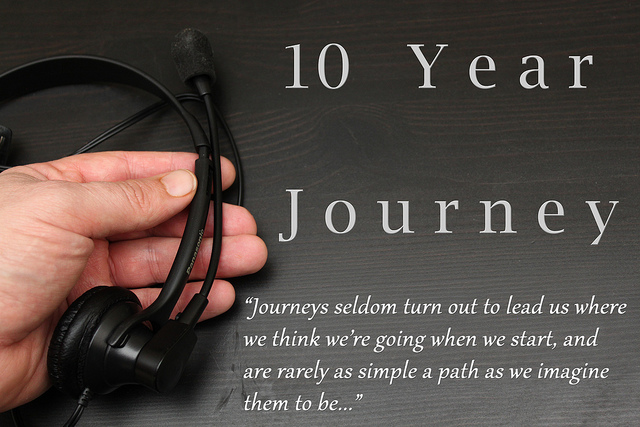A Customer Experience Strategy to build customers for life

A Customer Experience Strategy to build customers for life
Service is king. Service is key. Service is paramount to a business’s success. Service is… well it’s jolly important isn’t it? Obviously it is, and we’ve all been drumming this home to our customer service staff for years, and we’re right. But shift your focus back a little to look through the bigger and richer lens of customer experience. A service is a transaction- could be a wholly satisfactory transaction where both parties walk away perfectly content. Customer experience strategy is the framework that allows your customer interactions to go deeper and last longer. These could potentially be a key motivator for your customers when they’re choosing to stay or go.
Your agents could end a call, ticked the ‘resolved’ box, having said goodbye to a cheery voice on the other end of the line, feeling pretty good about the whole thing. But having a narrow focus on one moment with your customer doesn’t give you a true understanding about how they feel about your product, brand or service. You need to define, understand and monitor your customers end-to-end journey. Every point at which you can make a difference to them and influence how they feel about your brand. Here’s where your customer experience strategy comes into play.
Touchpoints
To develop a customer experience strategy, you first need to understand all the ways your customer interacts with your brand. These are all teeny tiny opportunities to ensure that warm glow of satisfaction is kept alight. These may add up to customers staying and spending more money with you over the years, and speaking fondly of you to others. It could be the obvious touchpoints like your website or your storefront. It could be your customer’s experience actually using your product. Or it could be the more peripheral touchpoints like referrals. Collectively, all these touchpoints create your customer’s experience. It’s unlikely your customers will abandon your brand because of a single poor experience like an unsatisfactory conversation with a customer service agent, but you need to look at this customer’s journey as a complete picture. Too many red flags and bad experiences will add up to a very cranky customer (or ex customer) indeed. Time to take the blinkers off.
Your Customer’s Journey
There are many paths that your customers can take to your business, and along the way there can be roadblocks, potholes, detours, a family of ducks waddling slowly across your path or many other reasons to make your customer throw their hands up and walk away. As a business developing a customer experience strategy, you need to identify the key journeys your customers take when dealing with your brand- do they google search a product, enter your website then ring up your customer service? Walk into your store, then hop onto your website and ring up to confirm something? You then need to understand the pain points that exist with each of these journeys and do your best to eliminate them. And that doesn’t mean running over the duckies, people! If your call times are too long, work with your agents to talk through scripts and resolution strategies to rectify it. If your customers are often needing to contact you soon after purchase with issues, then ensure your sales process and customer collateral is comprehensive enough for them to be clear on what they’re doing.
It Takes a Village
Every touchpoint is an asset, a valuable opportunity you have to recruit and retain customers. But these touchpoints aren’t sitting alone at the lunch table- they have mates and often quite a complex infrastructure making them tick. A poor customer experience on your website might be a minor issue in your back end that is easily fixed, however ends up being a headache for your customer. So when developing your customer experience strategy take a look at the supporting infrastructure for each of your touchpoints. It may be a design flaw in your business model that needs rectifying, no issue with the touchpoint itself.
Educate Your Front Line
Once you’ve developed your customer experience strategy, it’s time to let your front line in customer service know what’s up. Let’s not get too in depth with pie charts and PowerPoint presentations, as we don’t want them snoozing before we get to the good bits. Keep it simple- their role is to solve the customer’s immediate problem, and to understand their customers. Each customer’s experience with your business started well before this phone call, and will continue on after it. Brief your staff on stepping back and understanding the context in which the customer is calling- ensure follow up opportunities are identified and followed up on, pronto. More importantly make sure they know how important they are in the bigger picture of the customer service experience! They’re part of a richer story and helping them understand the importance of this may increase motivation and passion for their jobs which are handy by-products!
Need a game plan to win on the customer experience battlefield?
Flickr cc: Christopher

